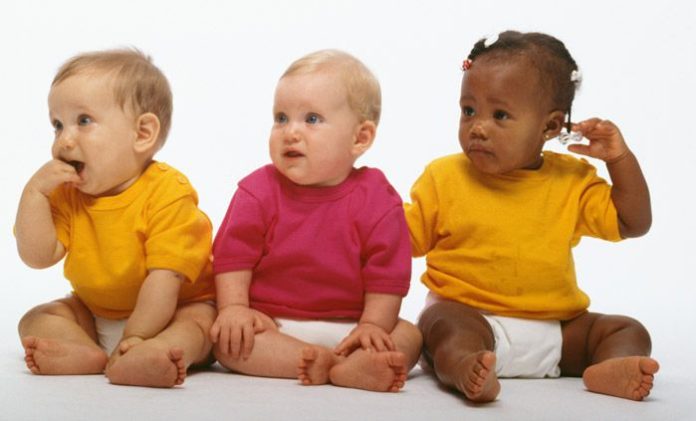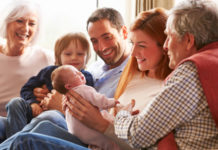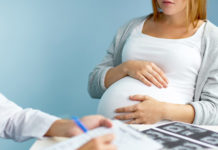What makes a cold more likely in a 3-12 month old baby?
Colds are more common in babies because their immune systems are not yet fully developed and do not protect them against infection as well as the immune systems of adults. The strength of a baby’s immune system affects the likelihood that a baby will get a cold. For the first six months of a baby’s life, they are protected by antibodies passed on from the mother during pregnancy and breastfeeding. But after six months of age, the antibodies are less effective and baby’s risk of catching a cold increases, until their immune system starts to develop its own antibodies.
Each time your baby gets a cold their immune system develops antibodies to fight off the virus causing the infection. These antibodies reduce the number of virus particles in the baby’s body so that baby’s symptoms go away. They also protect baby from becoming infected and catching a cold from the same virus in the future. However, the antibodies only protect against the single specific virus which is causing baby’s cold. This means that your baby may become infected with one of the scores of other viruses that cause colds. The antibodies they have produced do not protect against these.
Regardless of the strength of baby’s immune system they are more likely to get a cold in winter, as are children and adults. Although being cold doesn’t cause a cold, cold weather makes it easier for cold germs to spread. The air is dry and people spend more time indoors. These conditions make it easier for cold germs to transfer from one person to another. Cold air also makes the blood vessels in the nose smaller, which affects defences in the nose and makes it easier for cold germs to multiply once they enter the body. The more cold germs multiply, the harder it is for the body to fight them, and the more likely it is that the body will be affected by symptoms like blocked nose and coughing.
All babies are different and some are more likely to get colds than others. Babies who are more likely to get the common cold include those who are:
- Not being exclusively breastfed: Breastfeeding provides baby’s protection against infections like the common cold, and studies have shown that babies who are exclusively breastfed (given only breastmilk and no other food or drink) for at least the first four months of life, and partially breastfed thereafter, are about half as likely to get colds and similar infections;
- Exposed to secondhand smoke: Babies who breathe secondhand smoke from cigarettes (e.g. parents who smoke in the car or in the house) are more likely to get colds than those who are not inhaling secondhand smoke.
- Often in contact with other babies, children or people: Babies who are with lots of other children (e.g. childcare) are more likely to get colds. Any of the people they are near may have a contagious cold which can be passed on to the baby. Even at home, babies who live with older siblings are more likely to catch a cold than those who don’t.
How can colds be prevented in 3-12 month old babies?
Colds cannot be prevented with vaccination like other common childhood infections such as measles, influenza and chicken pox. This is because of the large number of viruses which can cause a cold. To ensure a child was protected it would be necessary to vaccinate for each of the hundreds of viruses that have the potential to cause a cold. However, there are many measures parents can take to reduce the chance their baby will catch a cold.
Breastfeeding
Breastfeeding your baby is the best thing you can do to prevent them catching a cold in their first year of life. When you breastfeed, you pass on antibodies which protect your body from the viruses that cause colds, and the antibodies also protect your child. Breastfeeding also gives your child the best possible nutrition, and being well nourished helps kids fight off diseases.
Hand washing
Washing your hands regularly, particularly before you handle or feed your baby, is an important measure for preventing colds and flu in your baby and the rest of your family. Make sure anybody else who touches your baby also washes their hands first. The viruses which cause colds can survive on the surface of a person’s hands after they cough, sneeze or touch a surface contaminated with cold germs. When a person who has cold germs touches a baby’s face, the germs can then enter the baby’s body via their nose or mouth.
Keep contaminated objects out of baby’s mouth
If your baby is getting to the age where they’re curious and active, you’ve almost certainly noticed their tendency to put almost anything into their mouth. Unfortunately almost any object around your house is potentially contaminated with cold germs, which means that when baby puts it in their mouth, the germs can enter their body. Do what you can to prevent your baby sticking dirty objects handled by others in their mouth. Clean objects which you know your baby likes putting in their mouth (e.g. their toys) regularly to remove cold germs. If your child uses a dummy it should be cleaned regularly. If your baby is hanging out with a baby who has a cold, don’t let them share toys or dummies and wash all the toys with soap and hot water when they’re done playing.
Avoid crowds and sick people
A baby is more likely to be exposed to the viruses which cause colds if they are in crowds. Avoid crowds if possible, especially during your baby’s first winter when they are the most likely to catch a cold. It’s also important to take measures to avoid people who are known to have colds. This is not always possible, but you should ask friends who are sick not to visit until their illness has resolved. Do not allow anyone who has a cold to hold or feed your baby, and ask all your friends (even those who don’t appear to have a cold) to wash their hands before baby cuddles.
Childcare centres are often crowded and babies under one year are the most vulnerable to catching a cold at childcare. While childcare is often a necessity rather than a choice, if you don’t need to, it might be better to keep your baby out of care this year. If you need to choose childcare, having your baby cared for at someone else’s home (e.g. care by a relative or friend, sharing a nanny between two families or doing a baby swap will be less likely to land them with a cold than sticking them in a big childcare centre. If a big childcare centre is your only option, check with the staff to make sure they teach kids handwashing and other ways to prevent colds (e.g. covering mouth when coughing). Make sure your baby has their own eating and drinking utensils and clearly label them with baby’s name so they don’t get shared with other babies that might have colds.
Cover your mouth when you cough
Covering your mouth when you cough and your nose when you sneeze prevents your cold germs entering the air and contaminating surfaces. Sneezing and coughing into a tissue and disposing of that tissue immediately stops the germs which cause the common cold from spreading. Teach everyone in your house, including children, good cough etiquette to reduce the likelihood your child will catch a cold. Even when using a tissue to cover, it’s important to wash your hands after every sneeze or cough.
References
- Mayo Clinic. Common cold in babies- Risk Factors. 2010. (cited 5 May 2013). Available from: (URL Link)
- South Australian Health Infection Prevention and Control. Hand Hygiene Guideline. 2010. (cited 22 Feb 2011). Available from: (URL Link)
- Mayo Clinic. Common Cold in Babies- Causes. 2013. (cited 28 July 2013). Available from: (URL link)
- National Health Service. Preventing Colds and Flus. 2012. (cited May 17 2013). Available from: (URL Link)
- Duijts L, Jaddoe VWV, Hofman A, Moll HA. Prolonged and exclusive breastfeeding reduces the risk of infectious diseases in infancy. Pediatrics. 2010; 126(1): 18-25 Available from: (URL Link)
- Curtis GB, Schuler J. Week 10. In Your baby’s first year- week by week. 3rd 2010. De Capo Press. (Full text).
- American Academy of Pediatrics. Caring for your baby and young child- birth to age 5- the complete and authoritative guide. 5th SP Shelov & T Altman. Random House. USA. (Full text).
- Olszewska W, Zambon M, Openshaw PJ. Development of vaccines against common colds. Br Med Bul. 2002; 62(1): 99111. (Full Text).
- World Health Organisation. 10 Facts on breastfeeding- health benefits for infants. 2012. (cited 18 May 2013). Available from: (URL Link)
- Snellman L, Adams W, Anderson G. et al. Institute for Clinical Systems Improvement. Diagnosis and Treatment of Respiratory Illness in Children and Adults. Updated January 2013. (cited 17 May 2013)] Available from: (URL Link)
- Mayo Clinic. Common cold in Babies- prevention. 2010. (cited 5 May 2013). Available from: (URL Link)
- Women’s and Children’s Health Network- Child and Youth Health. Colds. 2012. (cited 12 May 2013). Available from: (URL Link)
- Mayo Clinic. Guide to your baby’s first year. Good Books. Intercourse, United States. (Full text).
More information on colds in 3-12 month old babies
 |
For more information about baby colds and their causes, see Baby colds. |
 |
For more information about the symptoms experienced by a baby with a cold, see Baby cold symptoms. |
 |
For more information about when to take a baby with a cold to the doctor, see When to see a doctor. |
 |
For more information about how to comfort and look after for your baby when they have a cold, see Caring for babies with colds. |
 |
For more information about simple measures you can take to relieve the symptoms of your baby’s cold (and medicines you should avoid), see Baby cold remedies. |
 |
For a quick reference guide to baby colds, see Baby colds: 10 tips for parents. |



 (6 votes, average: 4.33 out of 5)
(6 votes, average: 4.33 out of 5) 







